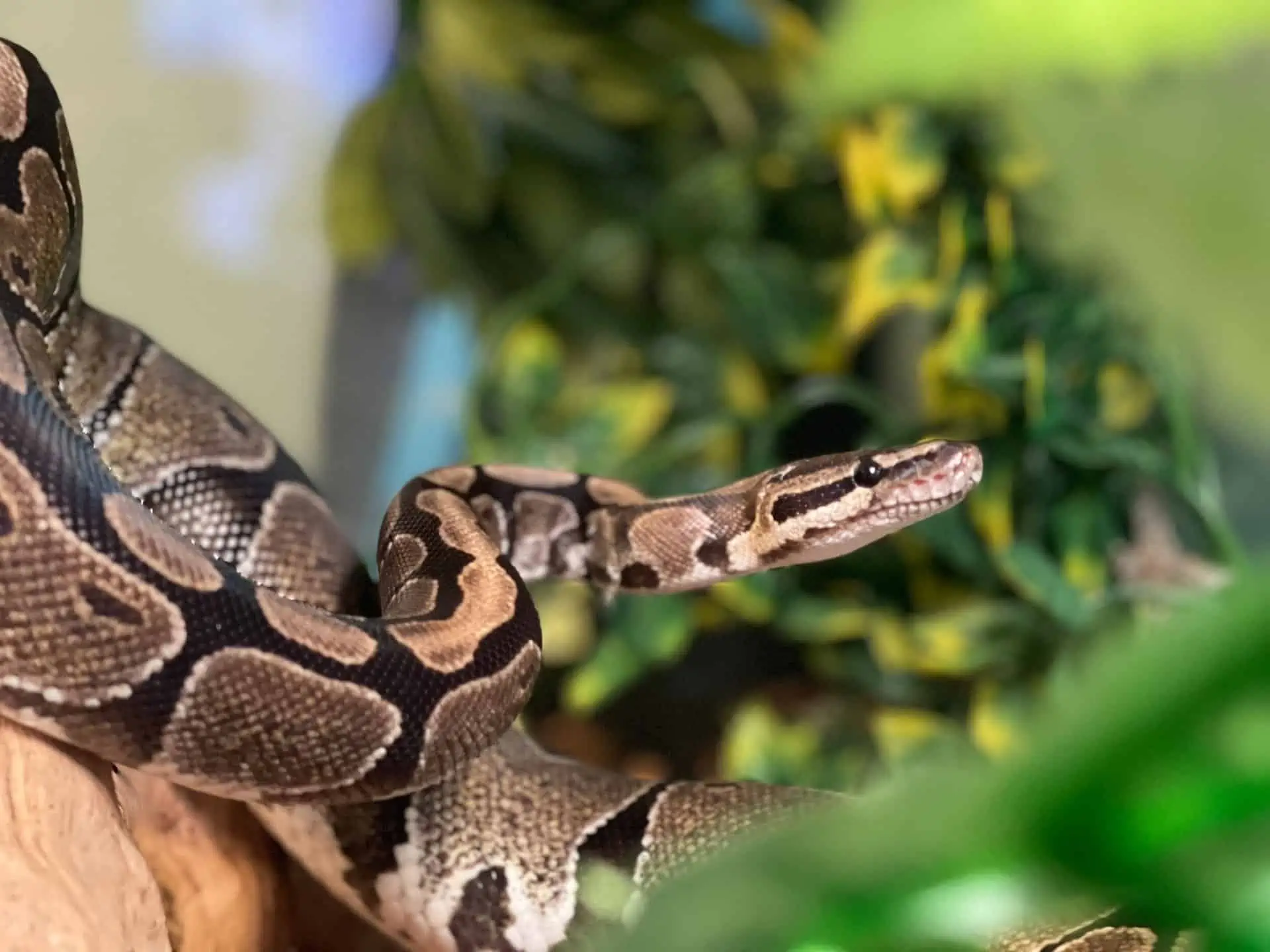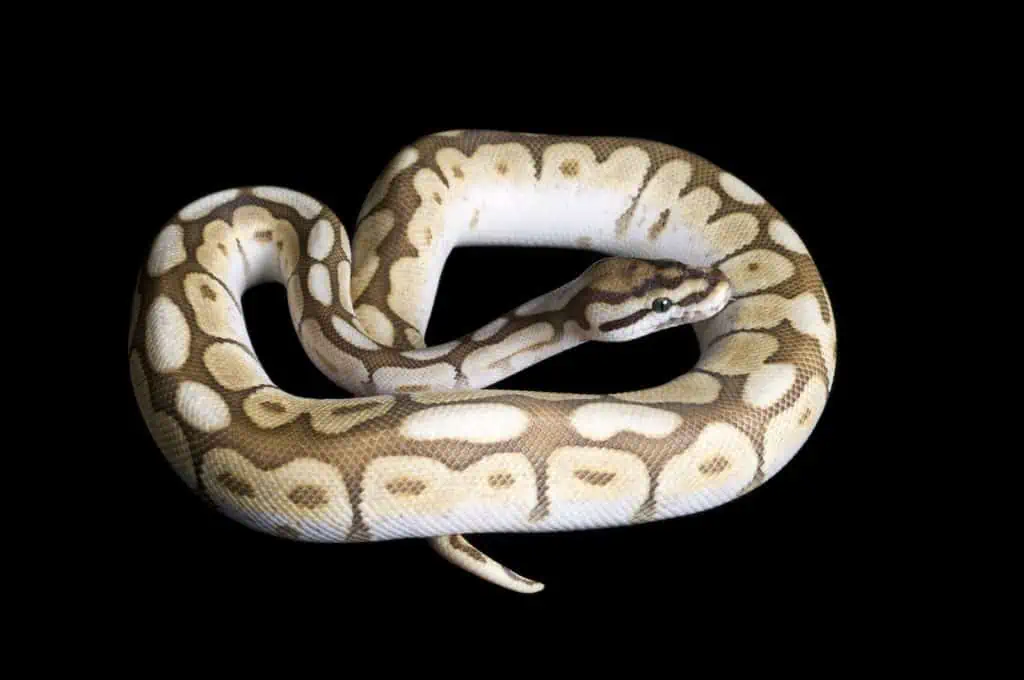Are you looking to breed your ball pythons one day? If so, it’s paramount that you understand how to tell if each snake is male or female. Ball pythons are quite popular and beloved as pets; however, many of their owners struggle with determining the gender since males and females look almost identical!
Ball python sexing is an interesting process that requires skill, knowledge, and patience. Several techniques can help make this process much easier, such as:
- Popping hemipenes
- Probing
- Genetic testing
- Tail size
- Observing pelvic spur
- Growth difference
In this article, we’ll explore the various techniques and procedures used to determine a ball python’s sex and consider why such knowledge is advantageous.
How To Sex a Ball Python?
When it comes to ball pythons, determining the sex can be a tricky and time-consuming process. If you’re unfamiliar with your ball python’s age or specific characteristics, it can be extremely difficult to differentiate between male and female specimens. The two genders share similar personalities and behaviors – the main discrepancies are in physical traits.
Here are the methods to distinguish male from female ball pythons accurately.
Popping Hemipenes
To “pop” a hemipenis is the process of temporarily projecting your ball python’s genitals outside its tail for easier gender identification, especially in hatchlings. During their first months, male ball pythons may not have full control over their hemipenes, enabling this technique to work more easily.
With adult ball pythons, though – because they possess greater muscle control – they might try to resist you pooping them, but still, you can do it carefully.
Popping Procedure
To accomplish this task, simply follow the outlined steps:
- Hold the snake’s body firmly and stabilize it, making sure not to squeeze too tightly.
- To open the vent, press your thumb against the vent scale and carefully slide it forward.
- Gently place your thumb on the base of the tail and apply a slight pressure to pop hemipenes, if present. Take care to avoid bending or damaging the tail while doing so.
- If hemipenes protrude, then you have a male ball python on your hands. The red coloration in the center is visible for confirmation.
- If there is no release, it means that you are interacting with a female.
Extreme caution is required when it comes to ‘pooping’ a hatchling ball python. Avoid using fingernails & excessive pressure when manipulating the animal’s back. Unless you have previous experience with the process, I urge that you abstain from attempting this procedure on your own.
To get an idea of how pooping younger and older pythons look in action, check this video:
Probing Ball Python
The probing technique requires some equipment- a lubricated and thin probe rod that is inserted through the snake’s cloaca. Depending on how far down this probe goes will give you insight into their gender.
Compared to the popping method, probing is much more reliable when determining the sex of an adult ball python. On top of its higher precision levels than other methods, probing also works best for older pythons because they have larger tails and are generally stronger!
Probing Procedure
To probe your ball python:
- Carefully insert a sterilized probe of the appropriate size into the vent, slightly angled off-center and pointing towards the tail’s end.
- When the probe reaches its stopping point, place your finger on it to determine how far it has gone, then gradually draw back.
- Keep your finger on it to measure how far the probe was inserted, and then place it next to the vent. It will give you a measurement based on the length of the subcaudal scales.
- A probe typically penetrates between 9 and 15 subcaudal scales for male Ball Pythons. However, the probe will only reach 1 to 5 subcaudals with female Ball Pythons before stopping.
See the video below to get a clear idea:
Potential Dangers of Probing
Probing can also be painful for the snake and stress them significantly if done incorrectly, leading to potential health problems and aggressive behavior in the long run.
- The probe must be of the right size and shape; otherwise, it may harm your pet internally if it’s too big.
- If the probe has hazardous edges, it could cause irreparable damage to reproductive regions.
- Applying too much force or an incorrect angle when using the correct probe can detrimentally harm a python.
- Finally, bacteria and parasites can be spread from python to python if dirty probes are used without being cleaned or sanitized between uses.
If you are inexperienced or uncertain, refrain from popping/probing–you might unintentionally hurt your ball python.
Tail Size and Shape Way
Distinguishing the tail size and shape is undoubtedly the simplest approach to determining a ball python’s gender. Both male and female specimens of similar sizes tend to have comparable tails proportional to their bodies.
To ensure accurate results, it’s recommended that you compare two snakes in person before making any assumptions.
Male Ball Python’s Tail
The male ball python has two hemipenes just below midway down the body. This is what they use to lock and mate with a female. As a result of these organs, their tail shape is adapted to make room and protect them.
The male ball python’s tail remains relatively the same size, distinctly square-shaped until reaching its pointy end; at this juncture, it abruptly thins. This feature lends a bulkier overall appearance to the male’s tail than its female counterparts.
Female Ball Python’s Tail
Unlike males, female snakes do not possess hemipenes. Consequently, ball pythons do not require this extra fat and are generally thinner than males – from the middle of their body downwards, there is a gradual thinning towards the tail’s tip that gives them an overall slender look.
It might seem unclear or confusing at first, but once you have tried it, there is an unmistakable distinction to observe.
Searching for Spurs Method
Ball pythons are one of a kind, with an evolutionary ancestor that was once equipped with the tiniest of back feet. Yet over time, these feet became unnecessary and have since diminished to nothing more than barely noticeable spurs located underside on either side of its cloaca.
You would be hard-pressed to see them without intentionally looking for them. If you want to identify the sex of your ball python without having it probed, spotting those small yet significant spurs is a great way to go about it!
Male Ball Python’s Spur
Male ball pythons often possess bigger spurs, and their claws are slightly curved inward. Moreover, they tend to be more active than the females of this species.
Male ball pythons rely on their spurs while competing for a female’s attention and defending against other males. The spurs provide a secure foothold during aggressive confrontations among rivals.
Female Ball Python’s Spur
Female spurs are almost imperceptible, and their role is minimal. While some specialists think they may use them a bit while wrapping up prey, female spurs have little purpose for the female species.
Despite the fact that pelvic spurs can be used to make an educated guess about a ball python’s sex, it is not always 100% accurate since spur size may naturally lessen in an adult male over time.
Growth Difference
Did you know that only around 14% of snake species have males larger than females? Fascinatingly, the opposite is true for ball pythons – female Ball Pythons are generally bigger due to their laying eggs and needing additional space in their body cavity.
When it comes to proper care in captivity, female pythons require a slightly oversized enclosure compared to their male counterparts.
To help you understand the size and weight differences between female and male ball pythons, I have put together a list of average measurements by age.
| Ball Pythons’ Age | Male Ball Python | Female Ball Python | ||
| Length (Inches) | Weight (Grams) | Length (Inches) | Weight (Grams) | |
| Hatchling | 10 to 17 In | 45 to 79 g | 10 to 17 In | 50 to 80 g |
| 1 month | 10 to 17 In | 70 to 99 g | 10 to 17 In | 80 to 104 g |
| 6 months | 20 to 27 In | 270 to 360 g | 20 to 27 In | 280 to 360 g |
| 9 months | 25 to 30 In | 390 to 450 g | 25 to 35 In | 450 to 550 g |
| 12 months | 18 to 24 In | 500 to 800 g | 24 In | 640 to 900 g |
| 18 months | 24 to 30 In | 600 to 900 g | 24 to 36 In | 1000 to 1400 g |
| 2 years | 24 to 36 In | 800 to 1100 g | 30 to 42 In | 1200 to 1800 g |
| 3 years | 30 to 42 In | 900 to 1200 g | 36 to 60 In | 1200 to 2000 g |
| 4+ years | 35 to 45 In | 1000 to 1200 g | 48 to 72 In | 2000 to 3000 g |
The drawback of this technique is that it only works if the pythons are close in age and can be difficult to distinguish at a young age. Once they reach one year old, their gender becomes more obvious as females rapidly increase in size while males grow more slowly.
Other Method for Sexing Ball Pythons
If you can locate a genetics testing company in your country that specializes in reptiles, this could be the perfect solution to sexing your snake without putting it at risk. Simply send one of its shed skins, and voila!
While this method is more costly than other methods, these companies are few and far between, so you may have too much difficulty finding one.
Importance of Ball Python Sexing
Sexing Ball Pythons is a crucial step in the breeding process, as it helps to ensure that potential offspring are likely to be healthy and successful. By correctly sexing a ball python:
- You can avoid mismatings and mislabeled snakes, which often lead to health problems for offspring or difficulty with identification later on.
- It also helps you to choose the appropriate size and type of cage for your pet. Females generally require more space to roam than males.
- It can help to prevent accidental matings between close relatives that could result in genetic issues in future generations.
- It also lets you properly monitor your pet’s food and water intake. A larger female ball python may require more food and water than a smaller male.
- Finally, sexing ball pythons helps you maintain accurate records of your pet’s health and well-being throughout its life.
Final Thoughts
Sexing your ball python can be tricky, but it’s far from impossible. While some methods are riskier than others, there are various ways to do it, depending on what you’re comfortable with and the resources available to you. Whether you rely on the pelvic popping technique or opt for genetics testing, knowing your pet’s gender is essential in providing adequate care.
What method do you use when sexing your Ball Python? How have these methods worked for you? We’d love to hear from you in the comments section below!



